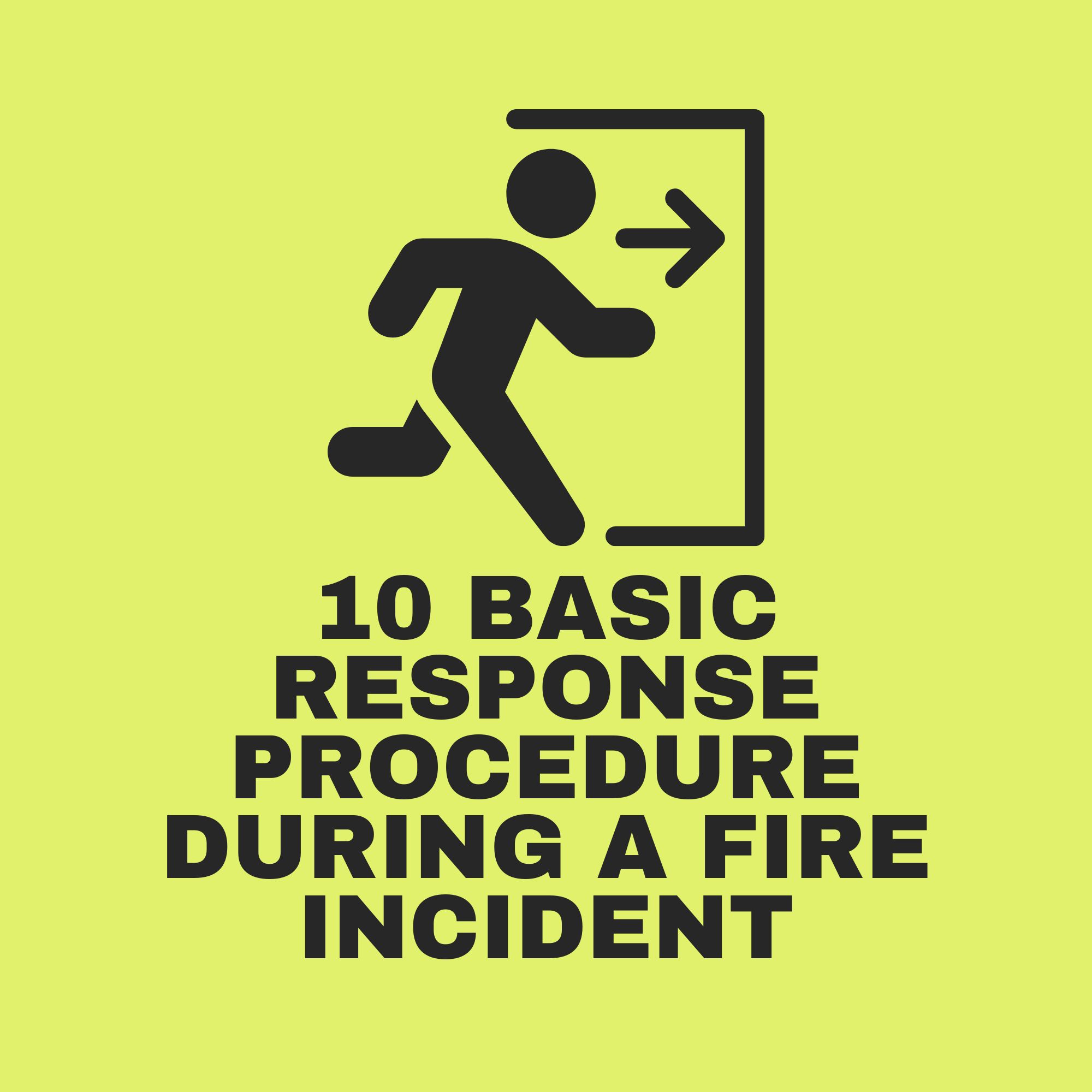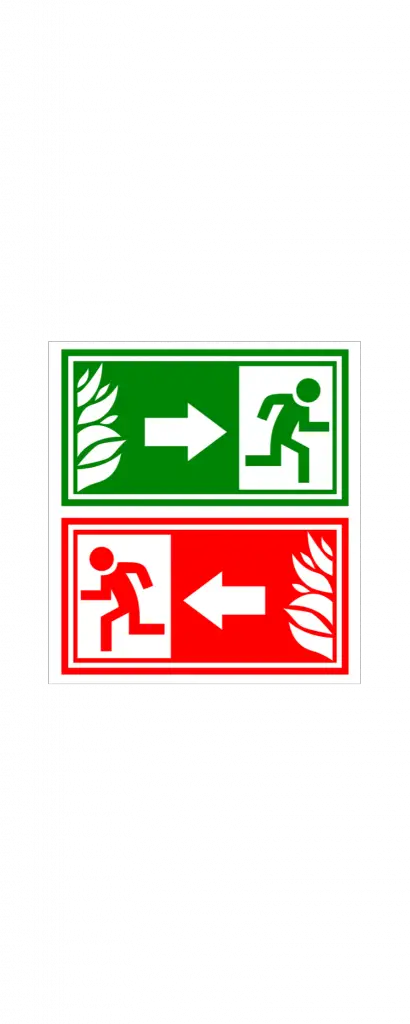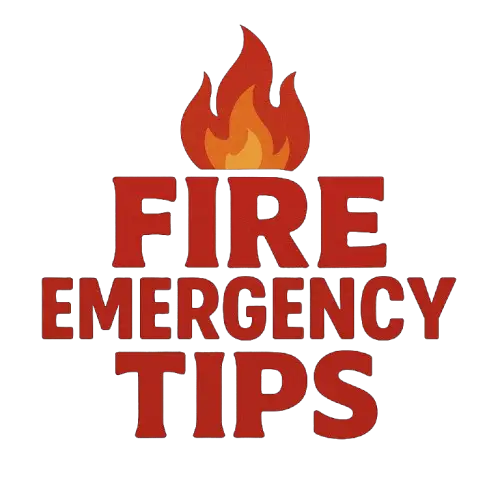
When you are faced with a fire emergency, you want to get out as early as possible to avoid the impacts that would otherwise result. This applies to any setting whether it is your workplace, school, or home.
According to Statistics, it has been revealed that fire injures about 300,000 and kills about 12,000 each year in the United States. Fire is also responsible for about $3 billion in property damage.
The purpose of this post, therefore, is to give you the tips that will get you prepared to handle the situation of fire in case you hear a fire alarm, or whenever you see some smoke or fire.
The following are the basic response procedures that you need to know:

1. Be Calm and Act Quickly
It is easy to get confused when confronted with a fire incident. You, however, need to be calm but know you are in danger.
Panicking may worsen the situation and you may find yourself getting into areas that would be difficult to evacuate and that would be dangerous for you. You, therefore, need to be clear in your mind on what to do next to avoid getting burned or overwhelmed by the fire.
2. Close the Immediate Door
If you are sure of where the fire is coming from, you may want to prevent the smoke and even excess heat from getting into your room as you prepare to escape. Closing the door will help in confining the fire to that area, and also helps in preventing smoke from getting into your room.
If the fire is spreading rapidly, this may not be possible since you would want to find an alternative exit as fast as you can.
3. Activate the Fire Alarm
As you exit, try to find a fire alarm and activate it so that the other occupants of the building can be alerted. It is important to note that a fire alarm can be a lifesaver and if you are the first one to notice some fire or smoke signs, try to activate the alarm before exiting the room.
In most cases, fire alarms are located in most parts of the building and as you exit through the fire exit door, you will be able to notice if your building has it.
And since you are reading this for your preparedness, it is important to install fire alarms and systems in your building whether for home, school, or workplace to help during times of emergency.
If you don’t have a fire alarm, you can get First Alert Fire Alarm as it has the capacity to detect smoke and carbon monoxide as well.
4. Warn Others of the Danger
Of course, the fire alarms are meant for alerting everyone in the building about the fire incident. However, if you are in a building without a fire alarm and there are other people in that area, you can alert them verbally as you try to exit.
5. Cover Your Nose If There is Smoke
Smoke can be dangerous when battling fire outbreaks. It can engulf the entire area and you may not even be able to see your next step. In addition to that, you may inhale some dangerous fumes that may even paralyze your movement and cause you to suffocate.
This is mostly the case with smoke from burning foam, rubber, or plastic. According to the National Fire Protection Association (NFPA), smoke can easily overcome people than the fire itself. It is important to note that the smoke from the mentioned substances can yield carbon monoxide or cyanide among other dangerous gases.
Therefore, you need to cover your nose to avoid inhaling the poisonous gases as you exit the area.
6. Use Fire Extinguisher or Smother Blanket
You need to note that you can only use a fire extinguisher for small fires. If the fire is manageable and not spreading or growing rapidly, then you can use the fire extinguisher to manage it.
In addition to that, you can only use a fire extinguisher if you are familiar with it and how to use it, and also when you have a clear safe way to exit backward. Most importantly, use a fire extinguisher when you have alerted everyone about the fire outbreak.
Smother or fire blankets are also useful when the fire is not spreading or is small and you can manage. They are most useful in kitchens for managing fat pan fires or paper fires that may occur in school or the workplace. These are called class F fires in the classification of fires.
If you don’t have a fire extinguisher, First Alert Home Fire Extinguisher can serve you better. You can consider also having a good fire blanket and I would recommend Prepared Hero for your home kitchen.
7. Switch of Electricity and Gas Supply
The fire could be a result of a faulty electrical connection or a leaking gas supply and if left on, it could worsen the situation. If you can, switch off the main power and gas supply switch. If the fire has spread to where the switches are, call an emergency for assistance.
Of course, switching off the electricity and gas supply does not help much if the fire has already spread and is not an entire solution to the problem. You still need to act swiftly to get the help that you need from professional emergency providers and the police.
8. Exit the Building
Everything that we have mentioned above can be helpful but only if you have time to do so. If the fire is spreading so rapidly, you may not have all the time to check the electrical switches or gas supply, or even to help your friends or colleagues. The most important thing at this point is to help yourself first.
If there is smoke engulfing the place and the heat is rising, then you need to crawl on the floor to reduce the amount of smoke that you would otherwise inhale while standing. In addition to that, you can use a window or any other route if the smoke or fire has blocked the exit.
When exiting, you need to observe the following:
- Do not use elevators but use the stairs instead.
- Assist the physically impaired if possible.
- Check closed doors before opening them, if they are hot, do not open them.
9. Do Not Re-enter the Building
You may realize that you have left something so valuable to you when you were in the rush to exit. Regardless of the value, don’t risk your life at the expense of it, especially if the fire is spreading rapidly.
10. Call for Help
Dial 911 on your phone and ask for help. This works for most countries but some countries may have specific emergency numbers for such incidences. 911 emergency number, however, works for over 90% of countries.

Conclusion
It is always crucial to be prepared and know what to do in case of a fire emergency. By following the basic response procedures outlined above, you can help ensure the safety of yourself and others around you during a fire incident.
Remember to stay calm, evacuate the building quickly and safely, and do not re-enter the building until it is declared safe by the emergency services.
